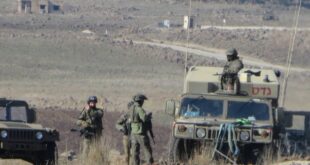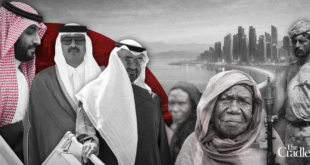The meeting between Syrian interim president Ahmad al-Sharaa and U.S. President Donald Trump in Riyadh marked a turning point in Syria’s international relations. By lifting sanctions on Damascus, Trump signaled to Washington’s allies that it was time to re-engage with Syria—not only through diplomacy but also through large-scale investment and strategic cooperation. The $7 billion energy deal signed with Qatari, Turkish, and American companies is just one example of Syria’s rapid reentry into the global economic landscape.
Yet Washington’s evolving approach goes far beyond economic normalization. U.S. policy has expanded to include security coordination, support for internal reconciliation, and even military integration, particularly through its facilitation of the 10 March 2025 agreement between President al-Sharaa and the Syrian Democratic Forces (SDF). The deal, brokered with U.S. oversight, involved not only the return of al-Hol camp and ISIS detention centers to Damascus but also a controversial provision allowing thousands of former foreign jihadist fighters to be integrated into the new Syrian army.
These developments have raised questions about the nature of American support for Damascus and whether Syria may soon emerge as a central U.S. partner in the region’s evolving strategic order.
Consolidating Central Authority in Northeast Syria
According to international affairs analyst Aziz Mousa, U.S. backing for the Sharaa government in the Kurdish file stems from Washington’s desire to leverage the SDF’s military expertise in the fight against terrorism—this time under the flag of a unified national army. Mousa notes that the U.S. is gradually reducing its own military footprint in northeastern Syria, dismantling key bases, and transferring critical responsibilities—including detention facilities for ISIS combatants—to the Syrian government.
Mousa argues that this handover is not merely logistical, but also a test of Damascus’s administrative capacity. He sees it as part of a broader U.S. effort to create durable stability by re-centralizing authority under a government that can claim legitimacy—however contested it may still be.
Analyst Osama Sheikh Ali of the Omran Center echoes this view but cautions against interpreting it as an abandonment of the SDF. “Rather than supporting non-state actors in isolation, the U.S. is increasingly betting on the central state,” he says. “Washington provided the SDF with money, arms, and training—and now it’s pressuring them to integrate those capabilities into a reformed national army.” This pressure is reinforced by guarantees from al-Sharaa, who has vowed to continue fighting ISIS, avoid extremist alliances, and preserve a peaceful relationship with the SDF.
Regional Balance and Contained Influence
Political researcher Sarkis Qassarjian sees U.S. policy in Syria as part of a wider effort to deconflict regional rivalries and create space for long-term economic projects. “The U.S. is quietly encouraging a minimum level of coordination among Syria’s key stakeholders—Turkey, the Gulf states, the Kurds, and the Syrian state itself,” he explains. This policy of quiet consensus-building underpins Washington’s renewed support for Damascus.
But Qassarjian and Mousa also note growing Turkish unease. Turkey perceives U.S. backing for Syria’s new central government as a threat to its own influence in northern Syria. The U.S. role as strategic balancer aims to prevent any single actor from dominating post-Assad Syria—a task complicated by the presence of Saudi Arabia, which enjoys both economic clout and political capital in the Syrian file. This has led Ankara to intensify its involvement in Syria, particularly by holding onto security and political levers in contested areas.
Syria as a Pressure Valve in U.S.–Russia–China Rivalry
According to Aziz Mousa, Syria is now seen by Washington as a strategic platform for indirect pressure on Russia, especially given the ongoing war in Ukraine. By securing influence in Syria, the U.S. aims to include Damascus in a broader deterrence architecture, linking conflict theaters from Eastern Europe to the Caucasus.
Qassarjian adds that China and Russia are closely monitoring the U.S.-backed integration of former jihadists into the Syrian army—seeing in it a potential security risk that could reverberate far beyond Syria. For Washington, this move may not be about immediate military objectives, but about signaling its capacity to shape the regional order and unsettle adversaries without direct confrontation. Still, he notes, “If expelling Russian troops from Syria were a priority, the U.S. would have made it a condition for lifting sanctions—which it did not.”
Toward the Abraham Accords Framework?
Qassarjian also emphasizes that U.S.–Syrian rapprochement aligns with Israeli interests. “Washington will never compromise Israel’s security,” he says. “Rather, its engagement with Damascus serves as a stepping stone toward a potential Syrian-Israeli normalization.” In that sense, current American policy is not just reactive but part of a broader attempt to integrate Syria into the post-Abraham Accords regional framework, where peace deals and security guarantees intersect with economic realignment.
 Eurasia Press & News
Eurasia Press & News



